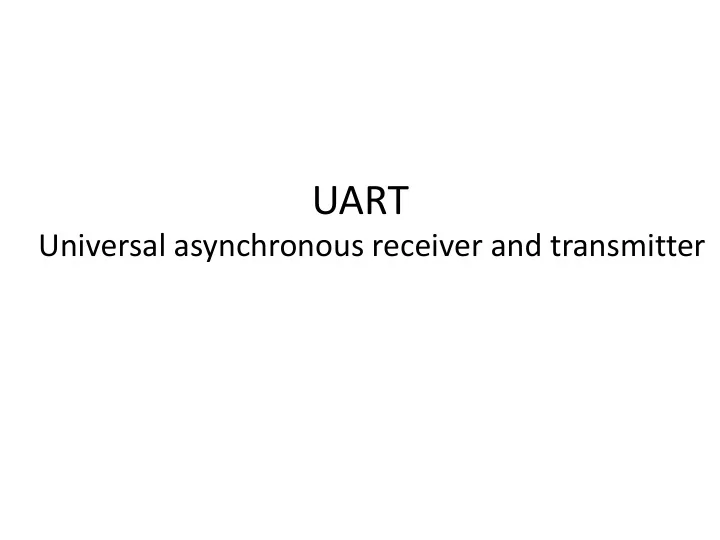

UART Universal asynchronous receiver and transmitter
UART • A protocol that translates data between parallel and serial form. • Interface with PC is serial. i.e Data is sent serially, bit by bit. • There are only two pins between UART & PC interface: rx_in and tx_out. •
UART IO pins for the UART verilog example code • http://www.asic-world.com/examples/verilog/uart.html
Specifics for the UART verilog example code • For this module: rx_clk set to be 16x faster than tx_clk which is desired baudrate. • Baudrate values 110, 150, 300, 1200, 2400, 9600, 19200, 38400, 115200, … • If tx_empty = 1 then ld_tx_data = 1 => tx_data is loaded For receiving , check if rx_empty = 0 then make uld_rx_data = 1 • For this code rx_in = tx_out (In test bench)
• You need to generate rx-clk and tx_clk from a reference clk that is generated on board according to your UCF file. Tx_clk is set as baudrate and rx-clk is 16 times faster. You need to find the appropriate counter numbers to divide the reference clk to generate both tx_clk and rx_clk. • For example if reference clk is 50MhZ and the baud rate is 115200 bps. You need to divide the reference clk by 50M/115200 = 434 clock cycles to generate tx_clk. The rx_clk is 16 times faster, so we need to divide the reference clk by 50M/115200 /16 = 27 cycles to generate rx_clk. • Verilog Code example: always@(posedge clk) begin tx_counter <= tx_counter + 1; rx_counter <= rx_counter + 1; if(tx_counter == 434) begin tx_counter <= 0; txclk <= ~ txclk; end if(rx_counter == 27) begin rx_counter <= 0; rxclk <= ~ rxclk; end end
Recommend
More recommend